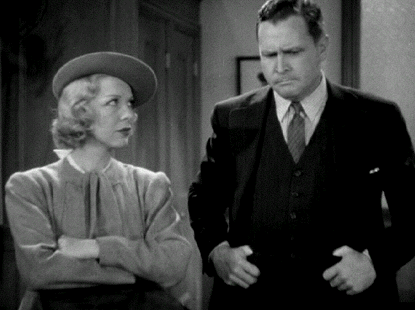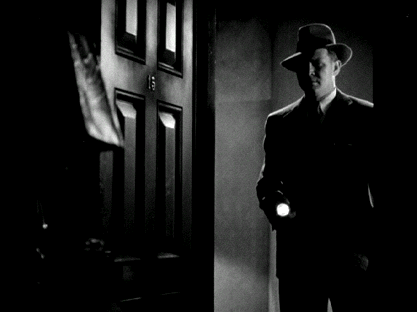Director: Mario Bava
Writers: Marcello Fondato, Mario Bava, Giuseppe Barillà, Mary Arden (adapting dialogue into English)
Producers: Massimo Patrizi, Alfredo Mirabile
Cast: Cameron Mitchell, Eva Bartok, Thomas Reiner, Mary Arden, Arianna Gorini, Lea Lander (as Lea Krugher), Claude Dantes, Dante DiPaolo, Massimo Righi, Franco Ressel, Luciano Pigozzi, Francesca Ungaro, Harriette White Medin, Giuliano Raffaelli, Heidi Stroh, Enzo Cerusico, Nadia Anty, Mary Carmen (as Mara Carmosino), Goffredo Unger (uncredited), Calisto Calisti (uncredited), Romano Moraschini (uncredited)
A masked man in black brutally murders Isabella (Francesca Ungaro), a model at the Rome fashion house Christian Haute Couture. Many of the models and staff at the fashion house have secrets to hide. While Police Inspector Silvestri (Thomas Reiner) investigates, the killer claims more victims. Silvestri suspects one of the men who work at the fashion house or are having relationships with the models.
The Flashback Fanatic movie review
The now-revered Italian director Mario Bava worked in many genres, but his horror films are what have received the most acclaim. He is also celebrated for originating the giallo film, that Italian subgenre of horror and suspense. Bava’s 1963 The Girl Who Knew Too Much is usually considered the first giallo film. However, it is his Blood and Black Lace, made the following year, which established the iconic stylistic template most associated with the genre. All of the traditional giallo elements are there: a black-gloved mystery killer; beautiful victims; prolonged stalk-and-kill set pieces; plenty of suspects and scandal in a posh environment; and the use of music, lighting, and editing that stylize the violence and terror.
Blood and Black Lace is must-see viewing for Mario Bava fans that showcases the director’s visual aesthetic. It was the signpost pointing the way for the giallo genre that would become increasingly popular in its native Italy and abroad by the 1970s. Bava and the film genre he initiated would inspire and influence Italian directors such as Dario Argento and Sergio Martino as well as Americans like Brian De Palma and John Carpenter.
It seems almost unthinkable that this pioneering film in this distinctive Italian genre was not successful in Italy at the time of its release. Despite some of its influences, such as the then-popular German krimi films (usually based on the crime thriller novels of British author Edgar Wallace), Blood and Black Lace may have been just a bit ahead of its time. The mystery aspect of the story is little more than a guessing game rather than a clue-laden plot. This is clearly an exercise in style over substance. Just as much as any Gothic horror film, the best giallo films are meant to disturb and excite with their atmosphere and menace.
One distinction that probably made the giallo an acquired taste was the lack of the sort of moral triumph concluding most typical horror and crime films at that time. Giallo films reveled in a world of glamorous sleaze, amoral ambitions, and sadistic violence. Representatives of law and order meant to solve the mystery and apprehend the culprit were not the main protagonists and were often ineffectual.
Another reason that Blood and Black Lace may have been off-putting was that there are no characters we can really bond with. They are all rather remote or secretive and conniving. This just confirms the cold and corrupt environment that makes the ongoing murders seem inevitable.
It is not surprising that Mario Bava would initiate this stylish and cynical genre. Bava had a strong streak of pessimism regarding the capitalistic, modern world. His later Bay of Blood (1971) is not only his most violent production and a direct influence on the American slasher film; it also seemed to vent his disdain for society’s amoral greed that consumes almost the entire cast. That pervasive pessimism seems to have its roots in Blood and Black Lace. Most of its main characters are corrupt or shamed and may be capable of anything. Their conflicts and secrets seem to be the catalyst for ongoing homicide, despite the best efforts of those enforcers of the social order, the police.
The reason that any of this engages the audience is its technique of presentation. Mario Bava had always been a great cinematographer, and his colorful and moody lighting here is every bit as striking as his earlier black-and-white classics. His visuals and shot choices tease us as much as the identity of the killer. It is Bava’s artistry that makes this grim tale of murder amid a cast of one-dimensional characters into a visceral experience for the viewers.
The biggest name in the cast is American star Cameron Mitchell as the fashion house co-director Massimo Morlacchi. He exudes a cold reserve that makes him seem just as suspect as anyone else. Mitchell made plenty of films in Europe, and this was the second of his three Bava-directed pictures. Mitchell and Bava seemed to really hit it off, and Mitchell considered Bava probably the greatest director he had ever worked work with. Mitchell admired Bava’s creativity and ingenuity in making good and interesting films despite budgetary limitations.
Eva Bartok also tops the cast list as the widowed Countess Cristiana Cuomo, the fashion house owner and business partner with Massimo Morlacchi. She appears to be all business and seems as remote a personality as just about every other character. Her performance becomes much more interesting as the film progresses and the plot develops. Blood and Black Lace would be the penultimate film in Bartok’s 20-year career of film acting in both the US and Europe.
If ever an actress went above and beyond the call of duty for a film, it was Mary Arden. Her character of model Peggy Peyton was subjected to probably more prolonged physical abuse than any other woman in film up to that time. While we take such physicality in movies for granted, this is all being performed in take after bruising take by Arden without a stunt double. I hope all of the pain and terror she expressed was just good acting. Arden was also nearly killed by the sharp latch of an automobile trunk lid that slammed down on her while filming a scene. The multilingual Mary Arden even pitched in to do the translation of the screenplay’s dialogue into English. After all of that injury and effort, Mary Arden never got paid!
Another lady in the cast deserving kudos for efforts way beyond her job description is Lea Lander. Billed as Lea Krugher in Blood and Black Lace, she plays the model Greta. A decade later Lander would act in Mario Bava’s Rabid Dogs (1974). That film’s post-production was not completed due to the bankruptcy proceedings resulting when one of the film’s financial backers died. Rabid Dogs went unfinished and unseen for almost a quarter century until Lea Lander took the initiative to help finance its DVD release. This would be worked on further by Mario Bava’s son Lamberto and grandson Roy along with producer Alfredo Leone to be released in 2002 as Kidnapped. Bravo to black-laced beauty Lea Lander! She not only graced a classic giallo, but she also resurrected Mario Bava’s most atypical and cynical film.
A key accessory to any giallo film hoping to make a stylish impression is the soundtrack. Carlo Rustichelli’s Blood and Black Lace score sets the pace for the musical flourishes that adorn the genre’s best. His main theme is sinister lounge music that is reprised throughout the film, often building up to horrific intensity. Rustichelli also scored two of director Bava’s Gothic horror classics: The Whip and the Body (1963) and Kill, Baby… Kill! (1966).
For the giallo curious, Blood and Black Lace is the perfect introduction. It is the trendsetting model of the genre designed to knock ‘em dead by that morbid maestro Mario Bava. So, what are you waiting for, an engraved invitation? You can ditch the tuxes and gowns and just barge on into this sanguinary salon for a bloody good time.




























